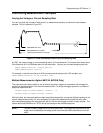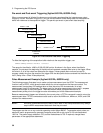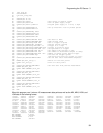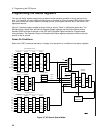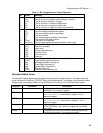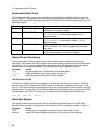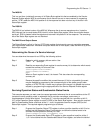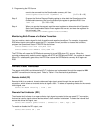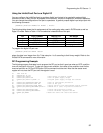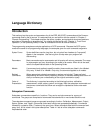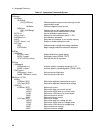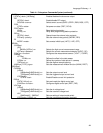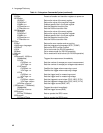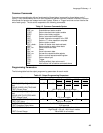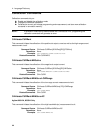
Programming the DC Source - 3
37
Using the Inhibit/Fault Port as a Digital I/O
You can configure the inhibit/fault port to provide a digital input/output to be used with custom digital
interface circuits or relay circuits. As shipped from the factory, the port is shipped for inhibit/fault operation.
You can change the configuration of the port to operate as a general purpose digital input output port with
the following command:
[SOURce:]DIGital:FUNCtion RIDFi | DIGio
The following table shows the bin assignments of the mating plug when used in RI/DFImode as well as
Digital I/O mode. Refer to Table 1-2 for the electrical characteristics of the port.
Pin FAULT/INHIBIT DIGITAL I/O Bit Weight
1 FLT Output OUT 0 0
2 FLT Output OUT 1 1
3 INH Input IN/OUT 2 2
4 INH Common Common not programmable
To program the digital I/O port use:
[SOURce:]DIGital:DATA <data>
where the data is an integer from 0 to 7 that sets pins 1 to 3 according to their binary weight. Refer to the
DIGital:DATA command for more information.
DFI Programming Example
The following program illustrates how to program the DFI port so that it goes low when an OCP condition
turns off the output of the unit. To clear an overcurrent condition, the cause of the condition must first be
removed and then an OUTput:PROTection:CLEar command must be sent. Note that the status event
register will not clear the DFI port until the register is read.
10 !Rev A.00.00
20 ASSIGN @Ps TO 705
30 OUTPUT @Ps;"*RST" ! Sets supply to default values
40 OUTPUT @Ps;"OUTP ON" ! Turn on power supply output
50 OUTPUT @Ps;"VOLT 10;CURR .1" ! Program power supply voltage and current
60 !
70 OUTPUT @Ld;"CURR:PROT:STAT ON" ! Turn on overcurrent protection
80 OUTPUT @Ld;"OUTP:DFI:STAT ON" ! Turn on DFI port
90 OUTPUT @Ld;"OUTP:DFI:SOUR QUES" ! Select DFI bit from Questionable status register
100 OUTPUT @Ld;"STAT:QUES:ENAB 2;PTR 2" ! Unmask bit 2 (OCP) on positive transition
110 !
120 OUTPUT @Ld;"OUTP:PROT:CLE" ! Clears the protection circuit
130 OUTPUT @Ld;"STAT:QUES:EVENT?" ! Clears the Event register and DFI
140 ENTER @Ld;EVENT ! Reads the event and clears the buffer
190 !



